Research Highlights
Research Highlights
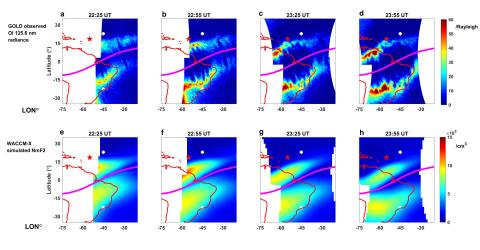
Hemispherically Asymmetric Evolution of Nighttime Ionospheric Equatorial Ionization Anomaly in the American Longitude Sector
Xuguang Cai, Liying Qian, Wenbin Wang, Joseph M. McInerney, Han-Li Liu, Richard W. Eastes in JGR–Space Physics reveal that the Global-scale Observation of Limb and Disk (GOLD) mission observed distinct post-sunset, hemispherically asymmetric evolution of the equatorial ionization anomaly between 40° and 50°W on 19 November 2018, with the southern crest shifting poleward but the northern crest remaining in the same latitude region. The Whole Atmosphere Community Climate Model-eXtended captured this phenomenon.
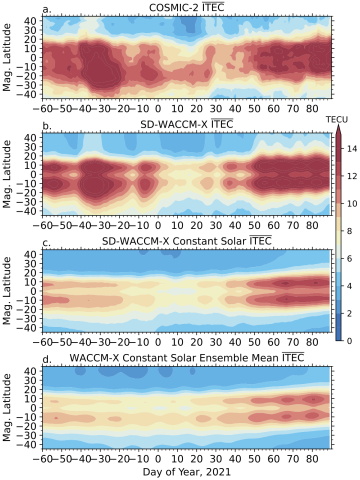
Ionosphere Variability During the 2020-2021 SSW: COSMIC-2 Observations and WACCM-X Simulations
Nicholas Pedatella investigates the variability in the ionosphere during the 2020-2021 sudden stratospheric warming (SSW) using a combination of Constellation Observing System for Meteorology, Ionosphere, and Climate-2 (COSMIC-2) observations and Whole Atmosphere Community Climate Model with thermosphere-ionosphere eXtension (WACCM-X) simulations. The unprecedented spatial-temporal sampling of the low latitude ionosphere afforded by COSMIC-2 enables investigating the short-term ($<$ 5 days) variability in the ionosphere during the SSW event
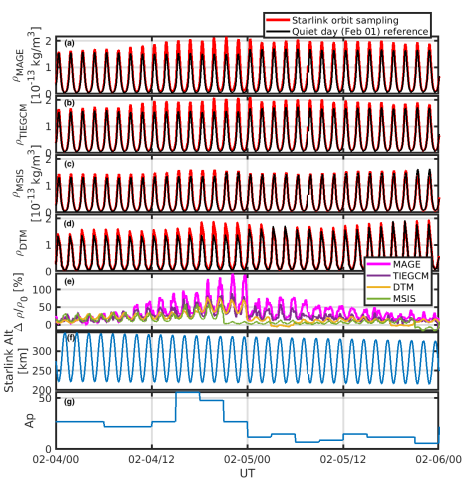
Thermospheric Neutral Density Variation during the "SpaceX" Storm: Implications from Physics-based Whole Geospace Modeling
In this study, Dong Lin, Wenbin Wang, Katherine Garcia-Sage, Jia Yue, Viacheslav Merkin, Joseph McInerney, Kevin Pham, and Kareem Sorathi compare the performance of a state-of-the-art physics-based, fully coupled whole geospace model and empirical models in predicting the neutral mass density variation in the thermosphere. It turns out that the physics-based model is more accurate in capturing the magnitude of storm enhancement of neutral density.
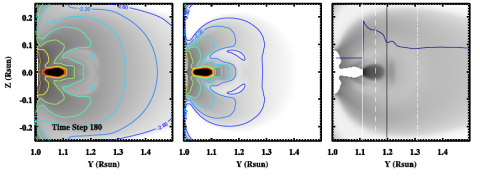
Synthetic Lyman-α Emissions for the coronagraph aboard the ASO-S mission I: an Eruptive Prominence-cavity System
J. Zhao, P. Zhang, S. E. Gibson, Y. Fan, L. Feng, F. Yu, H. Li, and W. Q. Gan present a discussion of the evolution of the eruptive prominence-cavity system as observed by the Lyman-α Solar Telescope (LST), analyzing the synthetic emissions both on the disk near the limb and in the corona as viewed by the coronagraph, as well as the three-dimensional data of MHD simulations.
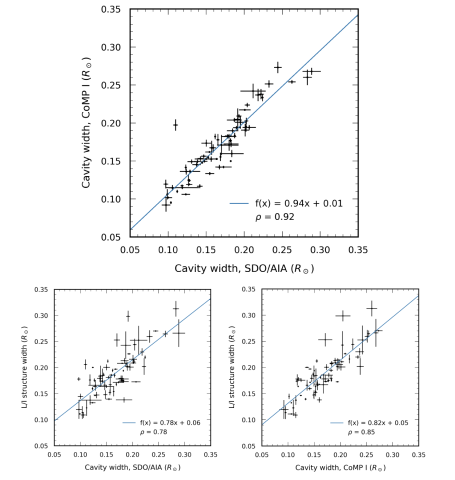
Coronal Cavities in CoMP Observations
A. Ruminska, U. Bak-Steslicka, S. E. Gibson, and Y. Fan studied quiescent coronal cavities observed between 2012 and 2018 by the Coronal Multichannel Polarimeter (CoMP). The majority of cavities in their study had a characteristic lagomorphic structure in linear polarization. They additionally compared cavity widths as observed in intensity with sizes of their linear polarization signatures for 70 cavities and found that both features are strongly correlated.
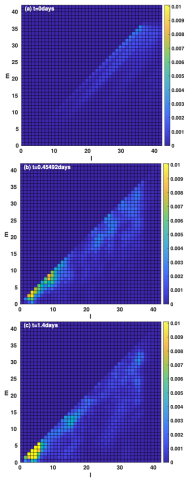
Simulating Solar Near-surface Rossby Waves By Inverse-cascade From Supergranule Energy
M. Dikpati, P. A. Gilman, G. A. Guerrero, A. G. Kosovichev, S. W. McIntosh, K. R. Sreenivasan, J. Warnecke, T. V. Zaqarashvili show that Rossby waves in the supergranule layer can be excited by an inverse cascade of kinetic energy from the nearly horizontal motions in supergranules. They illustrate how this excitation occurs using a hydrodynamic shallow-water model for a 3D thin rotating spherical shell.
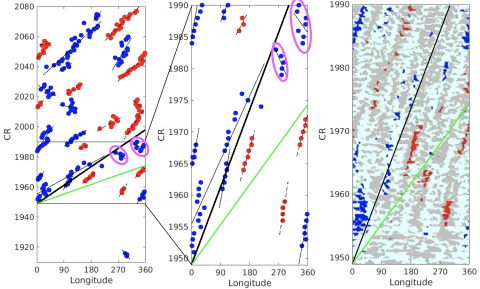
Tracking Movement Of Long-lived Equatorial Coronal Holes From Analysis Of Long-term McA Data
Jacob Harris, Mausumi Dikpati, Ian Hewins, Sarah E. Gibson, Scott W. McIntosh, Subhamoy Chatterjee, Thomas Kuchar use McIntosh Archive data and a newly developed two-step method of centroid calculation, to calculate the centroids of 31 unique, long-lived equatorial coronal holes for successive Carrington rotations during the entire solar cycle 23, and estimate their slopes (time versus longitude) as the coronal holes evolve.
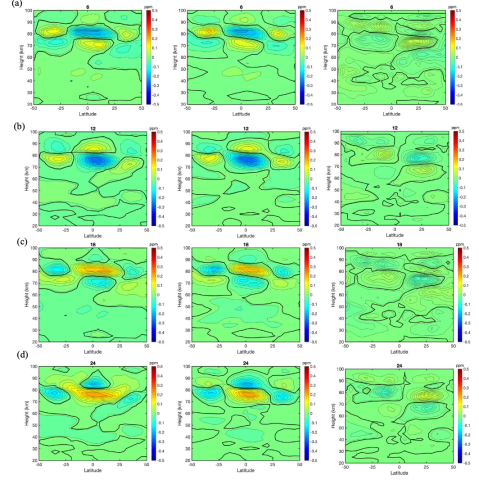
A Lagrangian Study of Tidal Advection of Mesospheric Water Vapor
N. Koushik, J. Oberheide, and N. M. Pedatella study the sources of diurnal variability of water vapor in the mesosphere with the help of the specified dynamics configuration of the Whole Atmosphere Community Climate Model with thermosphere-ionosphere eXtension (SD-WACCM-X) for typical equinox conditions during the solar minimum year 2009. Special emphasis is given to the advective transport by the migrating diurnal tide and its impact on the mean water vapor in the mesosphere.
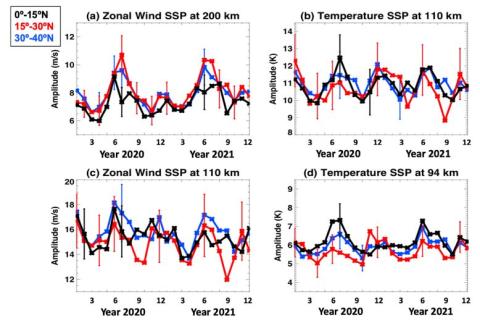
Seasonal Variations of Small-Scale Waves observed by ICON-MIGHTI
C. Y. Cullens, S. England, T. J. Immel, A. Maute, B. J. Harding, C. Triplett, J.J. Makela, et al. analyze the seasonal variations of small-scale perturbations between 90 km to 250 km using temperature and winds measurements made by the Michelson Interferometer for Global High-Resolution Thermospheric Imaging (MIGHTI) instrument onboard the Ionospheric Connection Explorer (ICON) satellite in the latitude range of 0°-40° N in the year of 2020-2021.